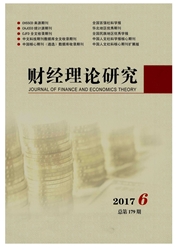

 中文摘要:
中文摘要:
近年来,中国劳动力市场上出现的农民工短缺与其工资上涨的现象引起了许多学者关于中国是否到达刘易斯拐点的讨论,但是与此同时出现的技能溢价现象似乎又与农民工短缺相矛盾。本文在已有研究的基础上放松了经典刘易斯模型中劳动力同质性以及中性技术变化的假设,认为短暂的非技能工人短缺以及工资的上涨并不能够代表中国已经到达刘易斯拐点。在中国,这一拐点并不是一个时间点而是一个时间段。由于城镇部门存在的技能偏向型技术变化,农民工的供给和需求之间存在着一个缺口,从而导致暂时的农民工短缺以及工资大幅度上涨现象,而政府对农村部门教育支出的增加不仅可以缩减这种缺口,还可以降低城镇部门的技能溢价,对整个经济体而言是一种帕累托改进。
 英文摘要:
英文摘要:
Recently, it has been a hot topic on whether China has reached the Lewis turning point with the seemingly shortage of migrant workers and the increase of their wages. But it seems that the skill premium in the la- bor market conflict with this phenomena. This paper extends the hypothesis of the classical Lewis model, which are the labor homogeneity and neutral technical change. According to the analysis, this paper thinks that the shortage of skilled workers and the increase of the wages do not mean that China has reached the Lewis turning point. In Chi- na, such point is not just a point but a period. There is a gap between the demand and supply of the migrant work- ers due to the skill biased technical change of the urban area, thus leading to the temporary shortage of the migrant workers and the increase of their wages. The increase of the education investment to the rural area of the government can not only tighten this gap, but also reduce the skill premium. Such policy is a Pareto improvement to the whole society.
 同期刊论文项目
同期刊论文项目
 同项目期刊论文
同项目期刊论文
 期刊信息
期刊信息
